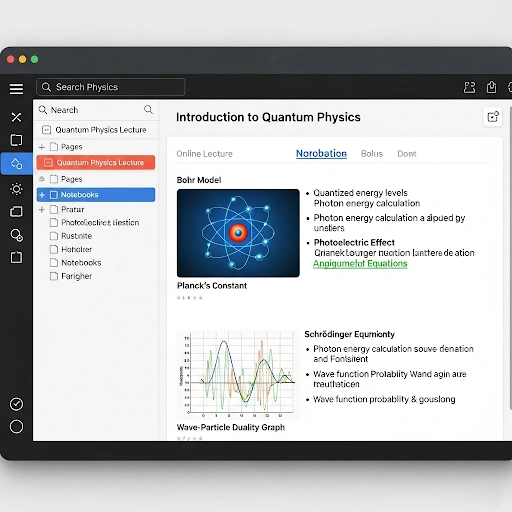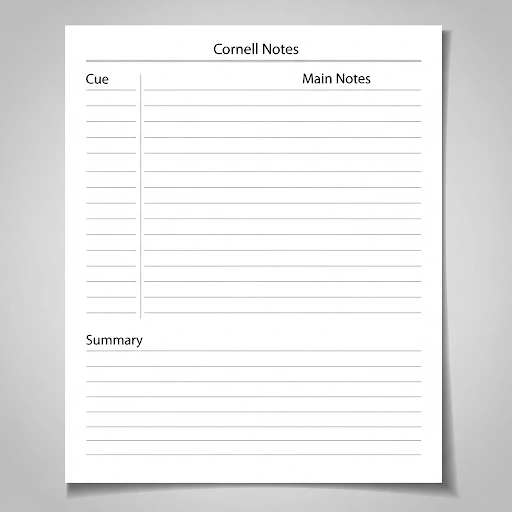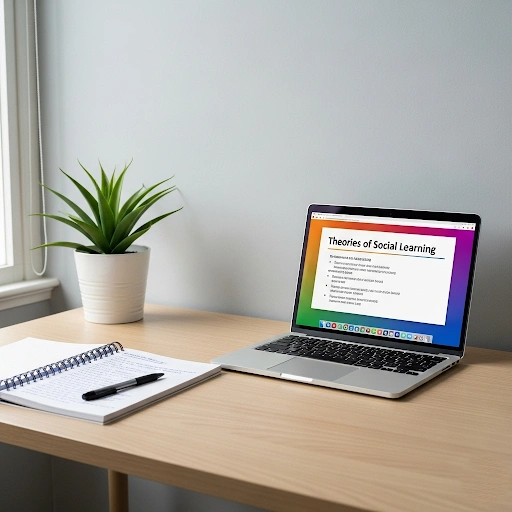The shift to online learning has brought unprecedented flexibility, but it also presents unique challenges, especially when managing online lecture notes effectively. Staring at a screen for hours, battling distractions, and processing information without the energy of a physical classroom can make traditional note-taking methods feel insufficient. By organizing your online lecture notes thoughtfully, you can turn online lectures into highly productive learning sessions. This comprehensive guide will explore strategies to optimize online lecture notes, showing how well-structured online lecture notes can boost comprehension, enhance memory, and support greater academic success in the fast-paced digital learning environment of 2025.
- What is Effective Note-Taking, and Why Online Lecture Notes Are Different?
- Why Learning Effective Note-Taking Methods Matters for Online Success
- How It Works: Practical Note-Taking Strategies for Online Lectures
- Real-Life Use Case: Applying Note-Taking to a Complex Online Science Lecture
- Comparison: Popular Note-Taking Methods for Online Learning
- Common Mistakes to Avoid in Note-Taking for Online Lectures
- Expert Tips and Best Practices for Online Lecture Note-Taking
- FAQ Section
- Conclusion
What is Effective Note-Taking, and Why Online Lecture Notes Are Different?
Effective note-taking is an active process of selecting, summarizing, and organizing information, especially when working with online lecture notes. It’s not just about transcribing every word in your online lecture notes, but about capturing key concepts, relationships, and questions that aid understanding. By structuring your online lecture notes carefully, you can enhance recall and make your online lecture notes a valuable resource for review and long-term learning.
Why Online Lecture Note-Taking Requires a Unique Approach in 2025:
- Increased Distractions: Your home environment often has more potential distractions (family, pets, phone, other tabs) than a classroom, making focused listening harder.
- Passive Consumption Trap: It’s easy to passively “watch” an online lecture without actively engaging. Effective note-taking forces engagement.
- Self-Regulation Demands: Online learning requires higher levels of self-discipline to stay on task and avoid falling behind. Note-taking is a critical tool for this.
- Multitasking Temptation: The ability to have multiple windows open can lead to “split attention,” reducing comprehension.
- Asynchronous Content: For pre-recorded lectures, you have the advantage of pausing, rewinding, and speeding up, which opens up new note-taking possibilities.
- Technical Glitches: Occasional audio/video lags can disrupt your flow, requiring adaptive note-taking.
Understanding these unique dynamics is the first step to developing effective online lecture notes strategies that truly work for you. Creating well-organized online lecture notes helps you stay engaged and retain key points during online lectures. By refining your approach to online lecture notes, you can make each session more productive. Consistently reviewing and updating your online lecture notes ensures they become a reliable resource for deeper understanding and long-term retention.

Why Learning Effective Note-Taking Methods Matters for Online Success
The benefits of strong note-taking extend far beyond just passing a test. For those engaging with online lectures, mastering effective note-taking strategies for online lectures provides a critical advantage:
- Boosts Active Listening & Engagement: Taking notes transforms passive listening into an active cognitive process. It forces your brain to process, summarize, and connect information rather than just letting it wash over you.
- Enhances Comprehension & Retention: The act of writing (or typing) notes aids in encoding information into your long-term memory. Well-organized notes make it easier to understand complex topics and recall them later.
- Creates Personalized Study Resources: Your notes are a distillation of the lecture’s most important points, filtered through your own understanding. This makes them a highly personalized and efficient study guide for review.
- Fosters Critical Thinking: Effective note-taking isn’t just transcription; it involves identifying main ideas, distinguishing between core concepts and examples, and formulating questions, all of which are critical thinking exercises.
- Manages Information Overload: Online lectures can sometimes deliver a lot of information quickly. Strategic note-taking helps you filter out the noise and capture only the most vital data.
- Reduces Distraction: The physical act of taking notes keeps your hands and mind engaged, making you less susceptible to the myriad distractions of an online environment. This is a core part of how you learn note taking methods that are truly effective. For general study tips, check out our guide on Agile Scrum Certification Tips for Beginners, which emphasize structured learning approaches.
How It Works: Practical Note-Taking Strategies for Online Lectures
Mastering effective note-taking strategies for online lectures involves a blend of pre-lecture preparation, in-lecture techniques, and post-lecture review. Here’s a systematic approach to help you learn note taking methods for online environments:
Phase 1: Pre-Lecture Preparation (Setting the Stage for Success)
Proactive preparation is even more vital for online lectures to minimize distractions and maximize absorption.
- ☐ Minimize Distractions:
- Close all unnecessary browser tabs and applications.
- Silence your phone or put it in another room.
- Inform housemates/family that you need uninterrupted time.
- Choose a quiet, dedicated workspace.
- ☐ Gather Materials:
- Have your chosen note-taking tool ready (laptop with note-taking software, physical notebook, tablet).
- Keep a pen/highlighter handy.
- Ensure stable internet connection and charged devices.
- ☐ Review Previous Material:
- Briefly look over notes from the last lecture or relevant chapter readings. This provides context for the new material.
- ☐ Preview Lecture Content:
- If provided, scan the lecture outline, slides, or assigned readings for key topics and vocabulary. This primes your brain for what’s coming.
- Formulate 1-2 questions you hope the lecture will answer.
Phase 2: During the Lecture (Active Engagement)
This is where your chosen note-taking method comes into play, adapted for the online environment.
- ☐ Choose Your Method (Adaptable for Online):
- **Cornell Method:** Divide your page into sections for main notes, cues/questions, and summary. Great for structured review.
- **Sketchnoting/Visual Notes:** Combine drawings, symbols, and text. Excellent for visual learners and synthesizing complex ideas.
- **Mind Mapping:** Central topic with radiating branches for sub-topics and details. Good for showing relationships.
- **Linear Notes with Annotations:** Standard bullet points/headings, but with active additions like questions, symbols, color-coding.
- **Digital Notes (e.g., OneNote, Notion, Evernote):** Allows for easy search, organization, multimedia integration, and typing speed.
- **Physical Notes (Paper & Pen):** Reduces screen fatigue, can foster deeper processing for some.
- ☐ Focus on Key Information, Not Transcription:
- Listen for main ideas, definitions, examples, and relationships.
- Look for verbal cues from the lecturer (“This is important,” “Remember that,” “The key takeaway is”).
- Pay attention to visual cues on slides (bolded text, diagrams, emphasized points).
- ☐ Use Shorthand & Symbols:
- Develop your own consistent abbreviations (e.g., w/ for with, & for and, vs. for versus, btw for between).
- Use symbols for quick annotation (e.g., ?, !, *, #).
- ☐ Pause & Rewind (for recorded lectures):
- Don’t be afraid to pause a recorded lecture to fully digest a complex idea, re-listen to a tricky concept, or quickly draw a diagram.
- Rewind if you miss something important; it’s better to catch it now than be confused later.
- ☐ Capture Questions & Confusions:
- Jot down any questions that arise during the lecture. This helps clarify doubts later and signals areas needing further study.
- Use a distinct symbol or section for questions.
- ☐ Integrate Visuals:
- Quickly sketch diagrams, flowcharts, or simple illustrations from the lecture slides or verbal descriptions.
- Visuals aid comprehension and memory significantly.

Phase 3: Post-Lecture Review (Solidifying Knowledge)
The magic of note-taking truly happens *after* the lecture, during active review.
- ☐ Immediate Review (Within 24 Hours):
- Go over your notes within 24 hours. This combats the “forgetting curve.”
- Fill in any gaps, clarify confusing points, and expand on shorthand.
- ☐ Summarize & Synthesize:
- Write a concise summary of the entire lecture in your own words. This forces you to synthesize information.
- For Cornell notes, fill in the summary section at the bottom.
- ☐ Generate Questions/Cues:
- Turn main points into questions in the margin or a separate “cue” section.
- Use these questions for active recall later (e.g., “What are the stages of mitosis?”).
- ☐ Connect to Prior Knowledge:
- How does this new information connect to what you already know? Drawing these links strengthens memory.
- Look for connections to other lectures or readings.
- ☐ Identify Action Items:
- Are there any assignments, readings, or discussion points mentioned? Add them to your to-do list.
- ☐ Regular Spaced Repetition:
- Revisit your notes periodically (e.g., after 3 days, a week, two weeks). Use the questions you generated for self-quizzing.

Real-Life Use Case: Applying Note-Taking to a Complex Online Science Lecture
Let’s see how a student, Maya, used a combination of effective online lecture notes strategies to tackle a complex, pre-recorded Biology lecture. By organizing her online lecture notes efficiently, she was able to capture the most important concepts and processes. Throughout the lecture, Maya refined her online lecture notes to highlight key steps and relationships, making review easier. Her consistent practice with online lecture notes allowed her to transform dense material into a clear and manageable study resource.
Maya knew this lecture would be dense, with many processes and formulas. She decided to use a digital note-taking app to create her online lecture notes efficiently, enhancing her ability to organize complex information. By structuring her online lecture notes clearly, she could quickly add images, diagrams, and annotations. Throughout the session, Maya refined her online lecture notes, ensuring each section captured the essential concepts and formulas for easier review.
Pre-Lecture Preparation:
Before the lecture, Maya quickly reviewed her previous online lecture notes on ATP and basic cell structure. She glanced at the lecture slides while cross-checking her online lecture notes, noting the main headings: Glycolysis, Krebs Cycle, Electron Transport Chain. This gave her a clear mental map for taking effective online lecture notes. She closed all social media tabs and set aside her online lecture notes, telling her roommates she’d be focused on the lecture for the next hour.
During the Lecture (Using Digital & Pause Features):
As the professor began explaining Glycolysis, Maya typed concise bullet points for the main steps and inputs/outputs. When a complex diagram of the Krebs Cycle appeared, she paused the lecture, took a screenshot of the diagram, pasted it into her OneNote, and then annotated it directly with text boxes explaining each part and flow. For key enzyme names, she wrote them down and marked them with a `*` for “important for recall.” When the professor mentioned a particularly tricky concept (e.g., chemiosmosis), she immediately jotted a `??` in the margin of her notes and also added a separate question in a “Questions for Professor” section at the top of her page: “Explain chemiosmosis analogy more clearly.” She paused several times during the Electron Transport Chain explanation to ensure she captured the flow of electrons and protons, replaying short segments as needed. She also used different font colors to highlight energy molecules (ATP in green, NADH/FADH2 in blue).
Post-Lecture Review (Within 24 Hours):
The evening after the lecture, Maya revisited her notes. She elaborated on her shorthand, turning bullet points into more complete sentences. She used the “cue column” feature in OneNote (or a separate section) to write questions like “What are the net products of glycolysis?” or “Where does the Krebs cycle occur?” She wrote a short summary of the entire cellular respiration process at the very bottom of her notes, consolidating her understanding. She then looked up “chemiosmosis analogy” online to clarify her confusion, updating her notes accordingly. She also identified terms like “ATP synthase” that needed to be added to her flashcard deck for spaced repetition.
By combining pre-planning, active digital note-taking, and strategic pausing, Maya effectively engaged with her online lecture notes, turning them into a powerful learning tool. She refined her online lecture notes by summarizing key points and highlighting concepts that mattered most. Regular review of online lecture notes helped reinforce her understanding, while sharing insights from her online lecture notes with peers further deepened her mastery. Through this approach, Maya demonstrated that online lecture notes can be more than transcription—they can be a path to true comprehension.
Comparison: Popular Note-Taking Methods for Online Learning
The best note-taking method is often a personal choice, but some are particularly well-suited for effective note-taking strategies for online lectures. Here’s a comparison to help you choose the right fit:
| Method | Description | Pros for Online Lectures | Cons for Online Lectures |
|---|---|---|---|
| Cornell Method | Divide paper/screen into Main Notes, Cue Column (questions/keywords), and Summary sections. |
|
|
| Sketchnoting / Visual Notes | Combining text, drawings, doodles, symbols, and visual metaphors to capture ideas. |
|
|
| Mind Mapping | Central topic branches out into sub-topics and keywords, forming a web-like diagram. |
|
|
| Linear Notes (Bullet Points & Headings) | Traditional method using bullet points, sub-points, and hierarchical headings. |
|
|
| Sliding-Scale Note-Taking (Combination) | Adapting your note-taking style based on lecture pace and content complexity. |
|
|
Experiment with these methods to find what works best for your learning style and the organization of your online lecture notes. Often, blending different approaches into your online lecture notes can make reviewing more effective, and regularly updating your online lecture notes helps reinforce understanding. By refining how you structure your online lecture notes, you capture key concepts efficiently and improve comprehension across all your online lectures.
Common Mistakes to Avoid in Note-Taking for Online Lectures
Even with the best intentions, students often fall into common traps when taking notes during online lectures. Being aware of these pitfalls will significantly help you develop effective note-taking strategies for online lectures:
- Passive Transcribing: Writing down everything the lecturer says without processing it. This turns you into a human recorder, not an active learner, and notes become unusable.
- Multitasking: Having other tabs open (social media, emails) while taking notes. Your brain cannot truly multitask; you’ll miss crucial information and reduce comprehension.
- No Pre-Lecture Prep: Diving into a lecture without any prior review or preview. This leaves you disoriented and unable to identify key points effectively.
- Ignoring Review: Believing note-taking ends when the lecture does. The most crucial part of note-taking is the post-lecture review and active recall.
- Disorganized Notes: Haphazardly scrawling notes without any structure, headings, or clear separation of ideas. This makes them useless for future study.
- Over-reliance on Digital Tools: Assuming simply using a laptop or specific app makes your notes better. The tool is secondary to the *method* and *active engagement*.
- Not Capturing Questions/Confusions: Failing to note down what you don’t understand during the lecture. These are vital indicators of areas needing further study or clarification from the instructor.
- Lack of Visuals: Not incorporating diagrams, flowcharts, or simple sketches when the lecture lends itself to visual representation. Visuals significantly aid memory and understanding.
- Forgetting the “Why”: Only writing down facts without noting the significance or relevance of the information.
Expert Tips and Best Practices for Online Lecture Note-Taking
To truly master effective note-taking strategies for online lectures and optimize your remote learning experience, integrate these expert tips into your routine:
- Create a Dedicated “Learning Zone”: Set up a specific, distraction-free space for your online lectures. This signals to your brain that it’s time to focus.
- Treat Online Lectures Like Live Ones: Even for recorded lectures, try to schedule and attend them as if they were live. This creates routine and reduces procrastination.
- Actively Engage with the Speaker: Even without direct interaction, mentally “talk” to the lecturer. Predict what they’ll say next, formulate questions, or silently summarize points.
- Utilize the 2-Column Method for Digital Notes: In a word processor or note-taking app, create two columns. One for main notes (wider), and a narrower one for keywords, questions, or action items that arise.
- Annotate Lecture Slides Directly: If slides are provided, use digital tools (like Adobe Acrobat for PDFs or OneNote/Evernote’s annotation features) to write notes directly onto the slides. This links your notes directly to the visuals.
- Experiment with Typing vs. Handwriting: Some studies suggest handwriting notes leads to better comprehension, while typing is faster. Try both to see what works best for you and the lecture’s pace.
- Use Color-Coding & Highlighting Strategically: Assign specific colors for different types of information (e.g., definitions, examples, questions, important points). Use highlighting sparingly for true emphasis.
- Incorporate Self-Quizzing: During your post-lecture review, transform your notes into flashcards or self-quiz questions. Active recall is the most powerful memory technique.
- Leverage Transcription Tools (with caution): Some platforms offer AI-generated lecture transcriptions. Use these as a backup for missed points or difficult terminology, but *never* as a replacement for active note-taking.
- Form an Online Study Group: Discussing lecture content and comparing notes with peers can clarify confusing points and deepen understanding.

FAQ Section
Here are some frequently asked questions about implementing effective note-taking strategies for online lectures and how to learn note taking methods for optimal results:
Q: Should I take notes digitally or by hand for online lectures?
A: It depends on your learning style and the lecture’s pace. Digital notes allow for faster typing, easy editing, and multimedia integration (screenshots). Handwritten notes can foster deeper processing and retention for some. Experiment to see which helps you focus and recall best.
Q: How do I stay focused during long online lectures?
A: Minimize distractions by closing unnecessary tabs and silencing your phone. Engage actively by taking notes, asking yourself questions, and pausing recorded lectures for short breaks. The Pomodoro Technique (25 minutes of focus, 5 minutes break) can also be effective.
Q: Is it okay to just highlight the lecture slides?
A: Highlighting alone is usually a passive activity. While it can draw attention to key points, it doesn’t actively engage your brain in processing the information. Combine highlighting with active note-taking (summarizing, rephrasing, adding questions) for better comprehension and retention.
Q: What should I do if the lecturer speaks too fast?
A: For live lectures, focus on main ideas and use shorthand. Jot down keywords and fill in details later. For recorded lectures, use the playback speed controls (slow down if needed) and the pause/rewind features frequently. Prioritize understanding over capturing every single word.
Q: How often should I review my online lecture notes?
A: For optimal retention, review your notes within 24 hours of the lecture. Then, implement a spaced repetition schedule: review again after 3 days, then a week, then two weeks, and so on. This prevents information from fading from your memory.
Q: Are there any free digital note-taking apps you recommend?
A: Popular free or freemium options include OneNote (Microsoft), Google Keep, Notion, and Evernote (basic free tier). These offer various features for organizing notes, adding multimedia, and syncing across devices.
Q: How can I effectively use lecture recordings for note-taking?
A: Use recordings strategically: 1) Watch once for overall understanding without notes. 2) Watch a second time, pausing frequently to take detailed notes and capture diagrams. 3) Use them later to clarify confusing points or revisit specific sections during review. Adjust playback speed as needed.
Conclusion
Succeeding in online learning hinges on more than just attending virtual classes—it requires actively engaging with your online lecture notes, reviewing them regularly, and developing smart study habits. By consistently applying effective note-taking strategies for online lectures, you can transform passive viewing into a powerful learning experience. Remember, the true value of your online lecture notes comes not just from writing them, but from the process of active listening, critical thinking, and disciplined review. Embracing these methods will enhance comprehension, retention, and confidence, allowing you to truly master note-taking techniques and make your online lecture notes a reliable resource for academic success.
Invest in your note-taking skills, experiment with what works best for you, and watch your confidence and academic performance soar in the
digital learning landscape. For tools that can further support your organized digital workflow and secure your study materials, explore options for
secure SaaS tools, which can assist with document management and cloud storage. You can also find research-backed tips for effective online learning on
Edutopia and insights on e-learning trends from
ScienceDaily Education.
To continue your journey into cloud security, consider the in-depth resources from the
Cloud Security Alliance (CSA), a leading authority on cloud best practices. For more hands-on guides, check out our other posts on building
